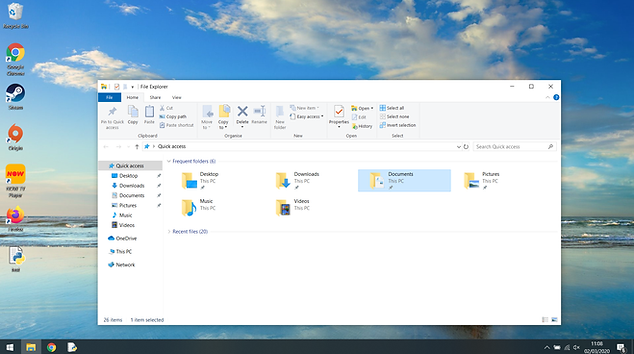5.1: Operating Systems
Exam Board:
OCR
Specification:
J277
Watch on YouTube:
Operating Systems
What is an Operating System?
An operating system (OS) is software that helps to manage the resources of a computer system and provide the interface between the user and the computer’s hardware.
There are five main functions of an operating system:
Memory Management & Multitasking
.png)
All programs must be temporarily stored in RAM for the CPU to be able to process them.
The OS transfers programs in and out of memory from the hard drive (or virtual memory) when processing is required - programs are removed from RAM when closed to free up space for other tasks.
The operating system can only perform one process at a time, but through memory management it can appear that more than one process is being executed - this is called multitasking.
Peripherals Management & Drivers
A peripheral is an external device connected to a computer system to input or output data. Data is transferred between external devices and the processor and this process needs to be managed by the operating system.
A device driver is a program that provides an interface for the OS to interact and communicate with an external device. Drivers are hardware dependent and OS-specific. The driver translates the OS’ instructions into a format the specific hardware can understand.
Because the CPU and the peripheral will process data at different speeds, a buffer is typically used to temporarily store data until it can be processed.
User Management
The OS allows users to create, manage and delete individual accounts. User accounts can be granted different access rights such as an administrator or guest.
The OS will manage security settings such as allowing passwords to be reset and can also be used to monitor login activity.
File Management
The operating system creates and maintains a logical management system to organise files and directories (folders).
File management allows files to be named, renamed, opened, copied, moved, saved, searched for, sorted and deleted. It also allows users to set access rights for specific files and to view file properties.
User Interface
The final function of an operating system is to provide a user interface, allowing a human to interact with the computer system. The way in which a user can navigate a computer system is known as human-computer interaction (HCI).
Graphical User Interface (GUI)
The most common type of user interface is a graphical user interface (GUI) which can be presented in the following ways:
Icons are displayed to represent shortcuts to applications and files.
Multiple windows can be opened at the same time and switched between.

A folder and file system is displayed and manipulated allowing for copying, searching, sorting and deleting data.
The interface can be customised, such as changing font sizes and the desktop background.
The taskbar allows shortcuts to be pinned for quick access.
Menus can be opened from the Start button to display files and shortcuts.
System settings can be accessed such as network and hardware options.
Command-Line Interface
Other types of user interface do exist, such as a command-line interface (CLI).
This type of interface is entirely text-based and requires users to interact with the system by typing commands. This is a complicated process and mistakes could easily accidentally delete data. There are many commands to learn so only experts who have been trained to learn this interface will be able to efficiently make use of it.

Other Interfaces
Humans can interact with computers using other types of interface, such as:
-
Touch-sensitive interface (e.g. smartphones).
-
Voice-sensitive interface (e.g. smart speakers).
-
Menu-driven interface (e.g. ATMs in banks).

Questo's Questions
5.1 - Operating Systems:
1. Describe each role of the operating system:
-
Providing a user interface [3]
-
Memory management (and multitasking) [3]
-
Peripheral management (and drivers) [3]
-
User management [3]
-
File management [3]
2. Describe 5 different ways the operating system can provide a graphical user interface (GUI). [5]